Invented by Todd A. Ballantyne, Jon H. Cook, Benjamin E. Colburn, Andrew E. Harner, Corey Christous, Shane Whalen, Deka Products LP
One of the key drivers of this market is the increasing prevalence of chronic diseases such as diabetes, kidney disease, and cancer. These conditions often require frequent monitoring and treatment with medical devices that rely on control systems and methods for fluid handling. Additionally, the aging population is also contributing to the growth of this market, as older adults are more likely to require medical devices for chronic conditions.
Another factor driving the market for control systems and methods for blood or fluid handling medical devices is the increasing focus on patient safety and quality of care. Healthcare providers are increasingly looking for devices that can deliver fluids and medications accurately and safely, with minimal risk of errors or adverse events. Control systems and methods that can help prevent medication errors, reduce the risk of infection, and improve patient outcomes are in high demand.
The market for control systems and methods for blood or fluid handling medical devices is also being driven by technological advancements. New technologies such as wireless connectivity, real-time monitoring, and artificial intelligence are being incorporated into medical devices to improve their functionality and safety. These technologies are also enabling healthcare providers to remotely monitor patients and adjust treatment plans as needed, which can improve patient outcomes and reduce healthcare costs.
In terms of geography, the market for control systems and methods for blood or fluid handling medical devices is expected to be dominated by North America and Europe. These regions have well-established healthcare systems and a high demand for advanced medical devices. However, the market is also expected to grow rapidly in Asia Pacific and other emerging markets, as healthcare infrastructure and access to medical devices improve.
Overall, the market for control systems and methods for blood or fluid handling medical devices is expected to continue growing in the coming years. Increasing demand for medical devices, a focus on patient safety and quality of care, and technological advancements are all driving this growth. As healthcare providers continue to seek out devices that can deliver accurate and safe fluid handling, the market for control systems and methods is likely to remain strong.
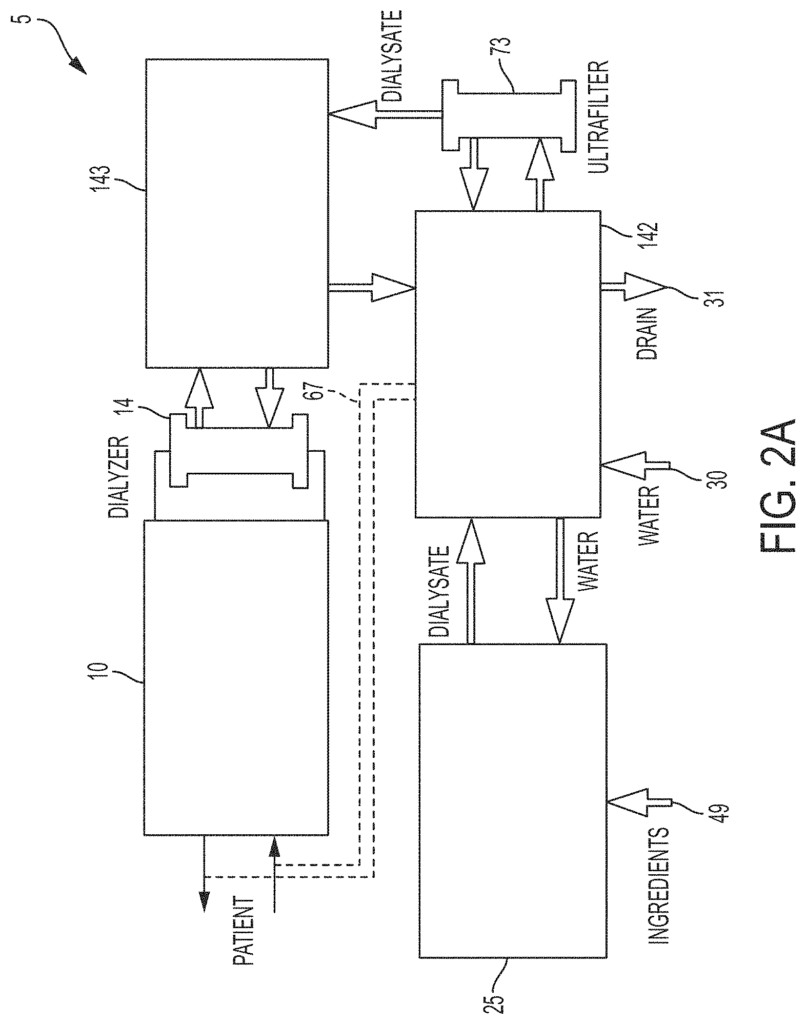
The Deka Products LP invention works as follows
A processor in a medical device that is configured to communicate with an external server can be programmed so as to protect it from malicious or unauthorized software. This type of protection can be implemented by a system or method that includes, for example, an at least one processor in the medical devices, a control module that controls operation of the device and is executable from the processor, a management module which manages data flows to and from external sources to the control module, and a module agent that has limited access to designated memory locations within the medical devices. A hemodialysis machine can also be configured to work in conjunction with a device that provides purified water, such as from a municipal supply or well. “A system for controlling the delivery of purified drinking water to the hemodialysis device can include a therapy controller configured to communicate to a controller of water purification devices, and a hemodialysis user interface controller configured to communicate to the therapy controller and to send and receive data on a user-interface.
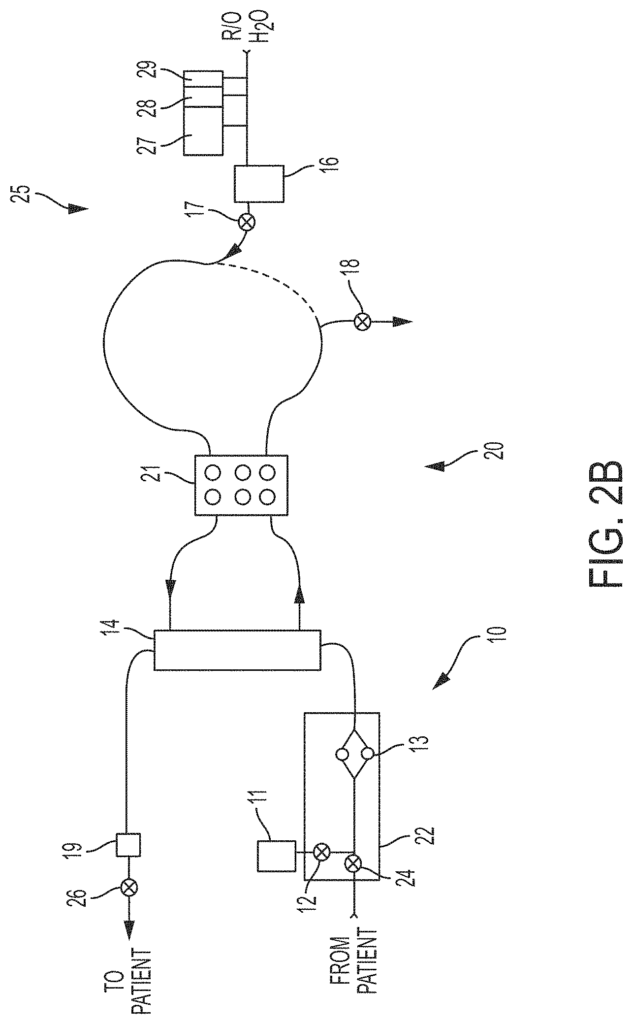
Background for Control systems and methods for Blood or Fluid Handling Medical Devices
Many factors make hemodialysis difficult, inefficient and expensive. The complexity of hemodialysis and safety concerns are among the factors. Dialysate is also needed in large quantities. Hemodialysis is usually performed by skilled technicians in dialysis centers. Any improvement in the efficiency and ease of dialysis could impact the cost or outcome for patients.
FIG. The diagram 1 shows a schematic of a hemodialysis machine. The system 5 has two flow paths: a blood path 10 and dialysate path 20. A patient’s blood is taken. A blood flow pumps 13 forces the blood around the blood flow path 10 to draw the blood from the patients, forcing the blood through the dialyzer 14 and returning the returned blood to the patient. The blood can also pass through other components such as an air trap 19 or a filter before being returned to the patient. Anticoagulant can also be delivered from an anticoagulant source 11 through an anticoagulant valve 12.
A dialysate pumps 15 draws dialysate out of a dialysate source 16 and causes it to pass through the Dialyzer 14. After that, the dialysate may pass through a waste valve 18, or return to the dialysate feeding via the dialysate pumps 15. Dialysate flow is controlled by dialysate pump 15. Dialyzers are filters with semi-permeable membranes. The blood flows through the filter and the dialysate solution is circulated around the tubes. The therapy is accomplished by passing waste molecules (e.g. urea and creatinine) through the tubes. The dialysate is made by passing waste molecules (e.g., urea, creatinine, etc.) through the tubes. The dialysate is discarded at the end of the treatment.
In one embodiment, the processor of a device configured to communicate wirelessly with a server or via a wired connection, can be programmed in order to protect it from malicious or unauthorized software. This type of protection can be implemented by a system or method that includes, for instance, a processor of the medical devices, a control module that controls its operation and is executable in the processor, a management module which manages the data flow from external sources to the control module, and an agent that has limited access to designated memory locations within the device. Agent modules can be software, hardware, or a combination. The method consists of enabling a communication link between the medical device and a remote computer server; activating an agent module that transmits a request via the enabled communications links; receiving files from remote servers, and storing the files received in predetermined locations accessible by agent module; validating downloaded files with the data-management module before transferring downloaded files within predetermining memory areas into internal memory accessible to the medical device control software.
The agent module may be given a limit on the amount of processor resources, storage space or memory.
The act of validating may include comparing a number of directory names that correspond to the directory structure of downloaded files with a list acceptable directory names. The act of validating prescription data in downloaded files can include comparing each file name to a list authorized file names, comparing a prescribed identifier with a patient’s identifier and determining if that patient identifier was previously associated with the prescribed identifier or comparing prescription parameter limits to predetermined limits. The method can also include an action by a user to confirm and accept a prescription indicated by prescription data. The data management module can perform the validation of downloaded files prior to reading them for storage in internal memory. Validation may be performed by using, for instance, a predefined signature or results from a HASH algorithm such as SHA512 or SHA256 or CRC, or any other data integrity algorithms, methods or techniques known to a person of ordinary skill.
The method can also include creating an update file in a memory location that is accessible to the agent module. The method may also include sending the update file to a remote server.
The communications link can be wireless or wired. It could be a WiFi or Ethernet connection.
In one embodiment, the method can be used to protect therapeutic medical devices from malicious software. (i.e. a device that is configured to deliver or exchange fluids to or from patients). The method can include activating the operating systems on the device, activating the firewall that is activated on boot up of the operating systems to limit outbound and inbound communication to a table of predetermined addresses on the device or processor, creating a communications connection to a remote device, terminating the communications link prior to the device starting a therapy and rebooting after the device has finished the therapy.
The therapeutic medical devices may be fluid handling devices, and the communication link can be shut down when the medical device leaves an idle state to initiate a fluid preparation stage. After the therapeutic medical devices has finished the therapy, and disinfected the fluid paths in the medical device, the operating system can be restarted. The medical device can be a hemodialysis machine, a pertinatodial dialysis machine, a cardiopulmonary by-pass device or an intravenous device.
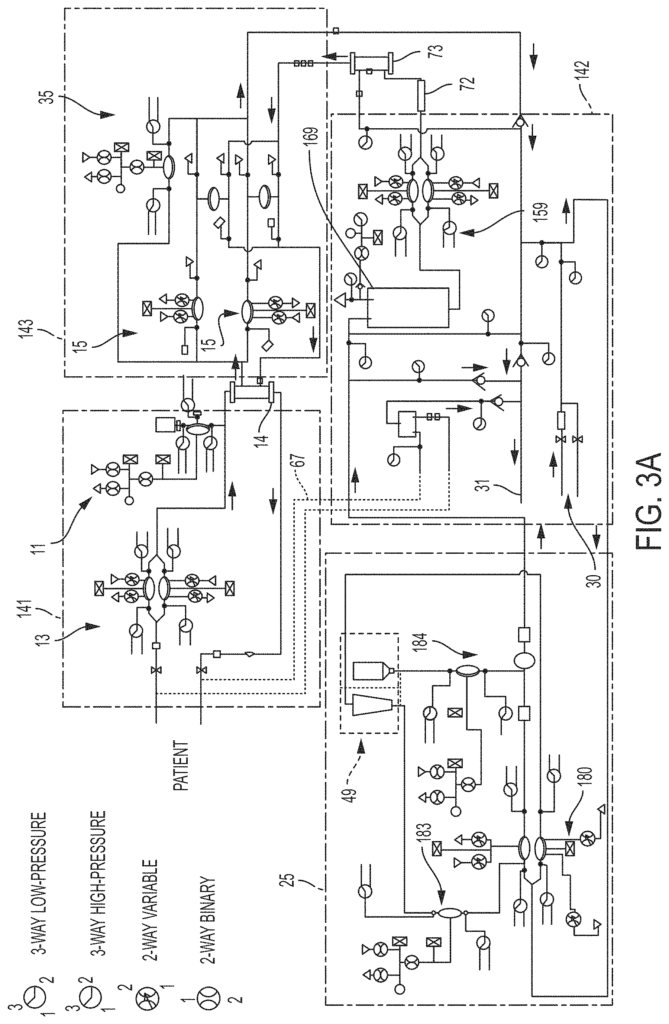
In one embodiment, a hemodialysis machine can be configured to work in conjunction with a device for providing purified drinking water from a water source such as municipal water or a well. Components of the purification device may be configured to deal with contaminants that are likely to be found in any particular location. This configuration can be stored on the hemodialysis machine and changed by prescribing parameters through the user interface.
The therapy controller may be configured to detect that the water purification is fluidly connected to the hemodialysis device. It can also be configured to receive information from the water purification device controller on one or more of the following: whether the water purification system is ready to provide purified water, an amount of purified stored in the water purification, a temperature of stored purified water in the water purification, electrical conductivity or resistivity of purified contained water, and whether the water purification has issued any error flags. The therapy controller may also be configured to detect the fluid connection between the hemodialysis device and the purification system. It can then receive data from the controller of the purification system on the following topics: whether or not the purification is ready to deliver purified, how much purified is stored, its temperature, electrical conductivity, or resistance, or whether or not one or several components are due for replacement or service.
The therapy controller can perform any of the following tasks based on information received from the water filter device: commanding the user-interface controller to send a message to a user-interface, receiving input from the controller of the user-interface in response input from the interface, or suspending or terminating a therapy for the hemodialysis device until the water filter device has undergone a maintenance or repair procedure.
The minor error flag sent by the water purification system causes the user interface controller controller to send a notification. This prevents the start of any future therapy until either the minor error is cleared or a user input through the user interface confirms a correction on the water filter device.
The water purification system will send a major error signal to the therapy controller. This causes the controller to calculate if the store of dialysate produced by the purified water from the device is enough to allow the hemodialysis machine to rinse the blood tubing circuit with dialysate. The therapy controller will command a rinseback if there is enough dialysate in the storage, and will discontinue therapy if not. The user interface controller is also instructed by the therapy controller to send a notification via the user interface. This notification will vary depending on what action the controller has taken.
The water purification system is ready for purified hemodialysis water if it has passed a water test, a test to determine if the purified contaminated water meets certain specifications, the electrical conductivity meets specified specifications, the device is in its initial phase where purified filtered water is discarded or a maintenance procedure is required before purification begins.
The therapy controller may be configured to instruct the user interface controller that a notification is sent to the user interface informing the user to test the water produced by the water purification system. The therapy controller can then instruct the water purification system to produce pure water if a test is passed or to only produce pure water after replacing a filter.
The therapy controller can receive or calculate the remaining days or volume of water before one or more filter in the water purification system is due for replacement.
The therapy controller can receive or calculate the remaining hours until an ultraviolet lamp is due to be replaced in the water purification system.
The therapy controller may also be configured to receive information on the temperature of the purified water produced by a water purification system, and provide that information to an algorithm for controlling a fluid heater in the hemodialysis machine.
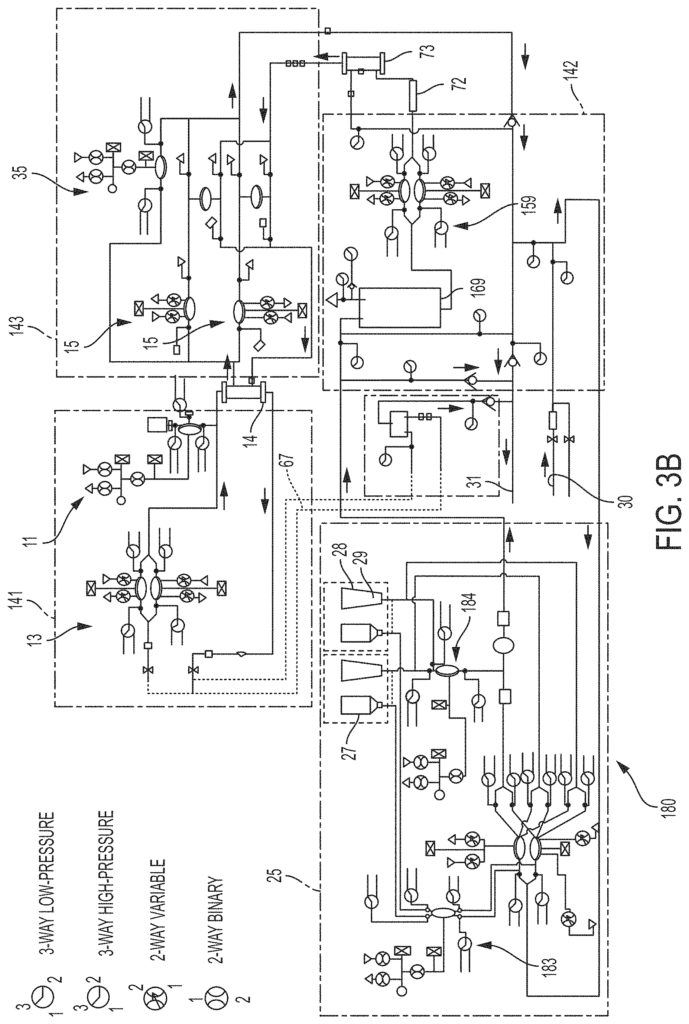
The following detailed description, when viewed in conjunction with the accompanying drawings, will reveal other advantages and novel features. The present specification will control in cases where the disclosures of the document incorporated by referencing and the current specification are inconsistent or conflicting. When two or more documents are incorporated by references and contain conflicting or inconsistent disclosure, the document with the latest effective date will control.
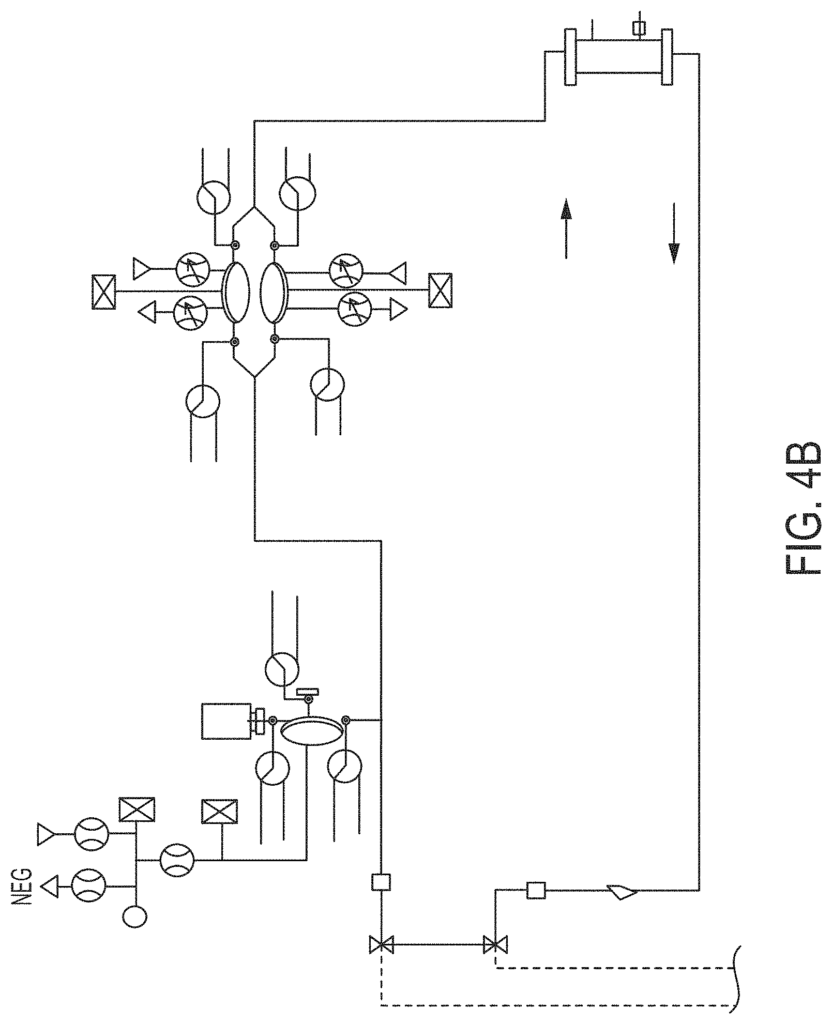
Click here to view the patent on Google Patents.
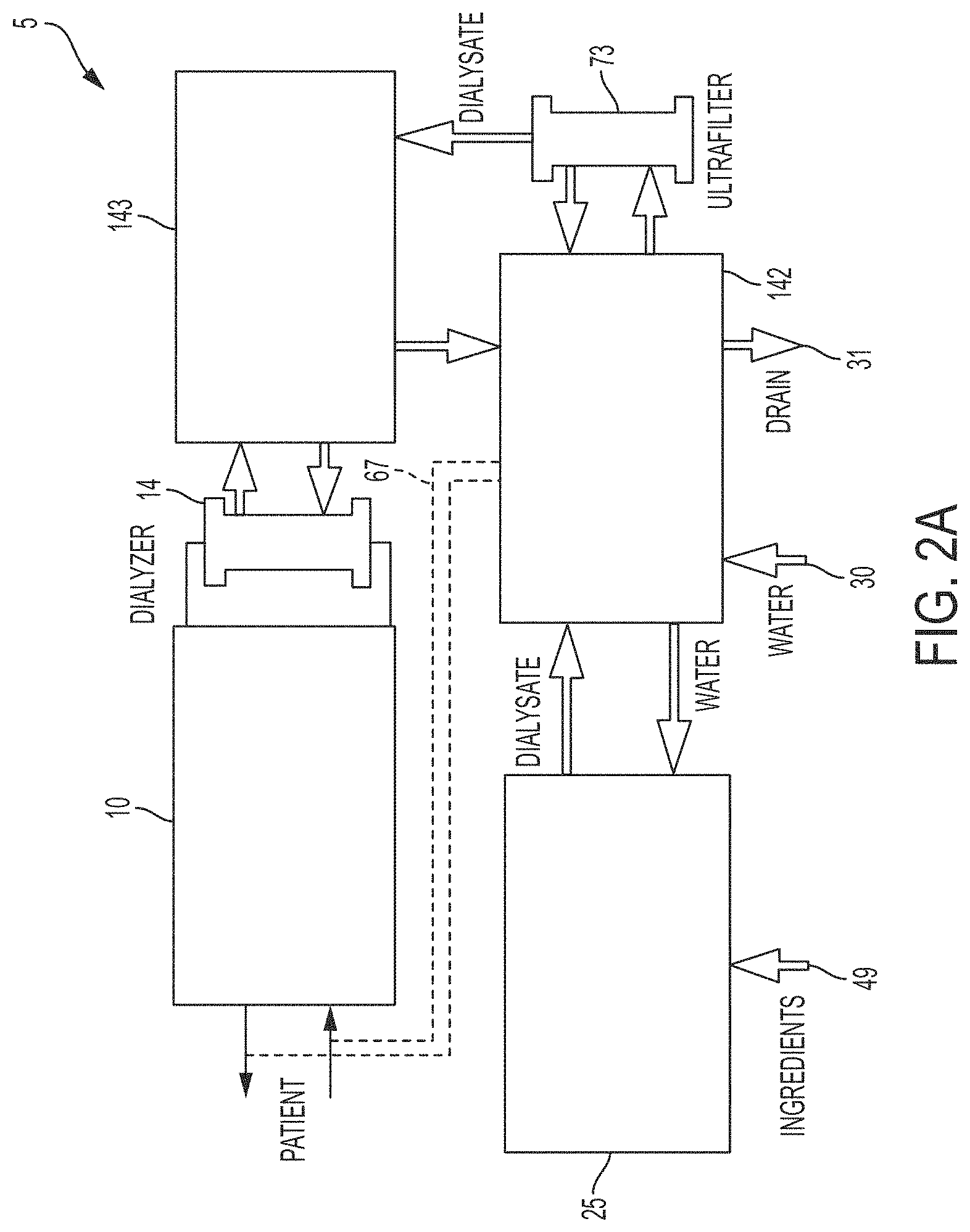
Leave a Reply